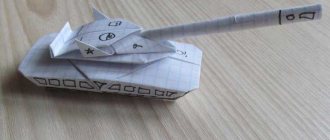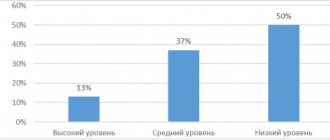Familiarization with the hometown as a means of patriotic education of preschool children
Bibliographic description:
Knyazyevskaya, S.V. Familiarization with the hometown as a means of patriotic education of preschoolers / S.V. Knyazyevskaya, L.V. Demidova, E.R. Kanapeeva. — Text: direct // Questions of preschool pedagogy. — 2021. — No. 3 (6). — P. 35-38. — URL: https://moluch.ru/th/1/archive/41/1213/ (access date: 11/21/2021).
In preschool age, a sense of patriotism begins to form: love and affection for the Motherland, devotion to it. Patriotic education of preschoolers includes the transfer of knowledge to them, the formation of attitudes based on it, and the organization of age-appropriate activities.
Key words: patriotic education, formation of social competence, social experience
The central idea of cultivating love for the Fatherland among Russian teachers was the idea of the people. So K. D. Ushinsky Fr. considering folklore a brilliant means of revealing national identity and forming patriotic feelings.
V. A. Sukhomlinsky argued that childhood is an everyday discovery of the world and therefore it must be done so that it becomes, first of all, a knowledge of man and the Fatherland, their beauty and greatness. A great contribution to the scientific substantiation of the moral and patriotic education of preschool children was made by R. I. Zhukovskaya, N. V. Vinogradova, E. I. Radina and others.
Modern research devoted to the problems of introducing preschool children to the history, culture, social life of their hometown (and through it the Fatherland) is associated with the study of the mechanisms of socialization, the formation of a child’s social competence, the child’s awareness of himself as a representative of the human race, the children’s perception of the world of objects of formation of knowledge about labor activity of adults, etc.
The basic stage in the formation of love for the Motherland in children should be considered their accumulation of social experience of life in their city, assimilation of the norms of behavior and relationships accepted in it, and familiarization with the world of its culture. Love for the Fatherland begins with love for one’s small homeland - the place where a person was born.
In this regard, it seems to us that it is of great importance to familiarize preschoolers with the historical, cultural, national, geographical, natural and ecological uniqueness of their native region.
The local history approach to the education of preschool children makes it possible to humanize the educational process, to choose an educational route for pupils not only in informational and educational terms, but also in emotional terms (I. A. Kolesnikova and others). Getting acquainted with his hometown and its attractions, the child learns to recognize himself as living in a certain time period and certain ethnocultural conditions and at the same time become familiar with the riches of national and world culture.
The central link of socialization - “the process of human development in interaction with the outside world” (A. V. Mudrik) - is the humanistic upbringing of a child based on universal human values, love for parents, family, the place where he grew up, and, of course, to Homeland. The experience accumulated in this case concerns both the knowledge and transformation of one or another area of reality, and the attitude towards them, which corresponds to one of the principles of personality-oriented didactics - the principle of synthesis of intellect, emotions and action. In this regard, the successful development of preschoolers when getting to know their hometown will become possible only if they actively interact with the world around them in an emotional and practical way, i.e. through play, object-based activities, communication, work, learning, various types of activities characteristic of preschool age .
Getting to know your hometown was previously included in the “Getting to Know Your Surroundings” section. Nowadays this activity is considered as independent. At the same time, an analysis of the literature and the experience of kindergartens allows us to conclude that the problems of incorporating the fundamentals of local history into the educational practice of a preschool institution have not been fully developed.
At the same time, it seems to us that it is legitimate for teachers to believe that the following must be taken into account in the moral and patriotic education of preschool children using local history material.
‒ Familiarization of preschoolers with their native city should naturally be part of a holistic educational process, built on the basis of identifying the dominant goals of the basic program, solved against the background of local history material.
‒ Introduction of local history material into work with children, taking into account the principle of a gradual transition from what is closer to the child, personally significant, to less close - cultural and historical facts.
‒ Forming a personal attitude towards facts, events, phenomena in the life of the city, creating conditions for the active involvement of children in social reality, increasing the personal significance for them of what is happening around, lays the preconditions for the development of the child’s ability to take a “substantive attitude towards his own life activity” ( V.I. Slobodchikov) and is a necessary condition for the development of his subjectivity.
‒ Development of museum pedagogy, which makes it possible to establish a child’s dialogue with the cultural heritage of the past and present.
‒ Implementing an activity-based approach to introducing children to the history, culture, and nature of their hometown, i.e., their choice of activities in which they would like to reflect their feelings, ideas about what they saw and heard (creative play, writing stories, making crafts, writing riddles, appliqué, modeling, drawing, conducting excursions, activities for city improvement, nature conservation, etc.).
‒ Involving children to participate in city holidays so that they have the opportunity to plunge into the atmosphere of general joy and fun (Maslenitsa, Christmas, Easter, etc.), get to know the city residents - bearers of sociocultural traditions in the field of crafts, song, dance, etc. . P.
‒ The creation of such a developmental environment in the group and preschool educational institutions that would contribute to the development of the child’s personality based on folk culture based on local history material (mini-museums of Russian life, objects of decorative and applied art, folklore, music, etc.), would allow “satisfying the need to understand the surrounding world, transform it according to the laws of goodness and beauty.
‒ Organizing work with parents under the motto: their knowledge and love for the city should be passed on to their children.
When building a pedagogical process to familiarize preschoolers with their hometown, it is recommended to take into account the following principles.
The principle of historicism. It is implemented by maintaining the chronological order of the described phenomena and comes down to two historical concepts: the past (a long time ago) and the present (in our days). This is due to the immaturity of historical consciousness among preschoolers; they cannot imagine the historical straight line of time, determine their place on it and trace the distance of certain events.
The principle of humanization. It assumes the teacher’s ability to take the child’s position, take into account his point of view, not ignore his feelings and emotions, see the child as a full partner, and also focus on the highest universal concepts - love for family, native land, Fatherland.
The principle of differentiation. It consists in creating optimal conditions for the self-realization of each child in the process of mastering knowledge about their hometown, taking into account the age, gender of the child, the experience they have accumulated, the characteristics of the emotional and cognitive sphere, etc.
The principle of integrativeness. Implemented in collaboration with a family, library, exhibition hall, museum, etc.; in the natural inclusion of local history material in basic preschool education programs. The content of local history material is determined taking into account continuity with primary school; combinations of all types of activities when introducing children to the historical and cultural features of Novokuibyshevsk.
Integration in the pedagogical process is now considered as a factor in creating the emotional well-being of a child in kindergarten, as the most important condition for his holistic development, first creative manifestations and the formation of individuality. Familiarizing preschoolers with their hometown can become the core around which all types of children's activities are integrated.
One of the options for implementing the principle of integration in working with preschoolers is to organize the educational process based on thematic planning. This allows you to see different aspects of phenomena: social, moral and ethical, natural science, artistic and aesthetic, etc. In addition, “immersion” in a particular topic that children of different ages are simultaneously studying allows them to unite them with common feelings, experiences of holding joint matinees , leisure evenings, exhibitions. At the same time, older people can share their experience with younger ones, prepare materials necessary both for their own activities and for activities with children, make gifts for them, etc. This is how a children's community is created.
It is known that the most difficult thing in getting to know your hometown, especially its history and sights, is writing stories for preschoolers. In this case, it is necessary to remember the following.
‒ Accompany the story with visual material: photographs, reproductions, slides, diagrams, drawings, etc.
‒ Address children with questions during the story in order to activate their attention, arouse the desire to learn something on their own, try to guess something themselves (you can ask: “Why do you think people decided to build a city in this particular place? Where did they come from?” what is the name? What can it mean? How can one guess that the Kremlin is a fortress?).
‒ Don’t give dates: they make it difficult to understand the material. Use expressions such as: “It was a long time ago when our grandparents were as small as you”; or: “It was a very, very, very long time ago, when your mothers and grandparents were not yet alive.”
‒ Use vocabulary accessible to children, explain the meaning of unfamiliar words (prince, elder...); do not use special terminology, do not overload the story with complex grammatical structures.
When working with the proposed model, it is necessary to take into account that the “range of topics” is flexible. When returning to the material again, the local history content is gradually filled with new concepts, meanings and values.
Every moment of introducing preschoolers to their hometown should be permeated with education and respect for a person - a worker, a defender of the city, a worthy citizen. The tasks of introducing children to city life. Its history, culture, and nature can be addressed most effectively when a connection between generations is established in the classroom and knowledge of the immediate environment is necessarily connected with the cultural traditions of the past.
Based on the above, we can conclude that building the educational process on local history material allows us to solve the following tasks of the moral and patriotic education of preschoolers.
‒ To form a love for one’s hometown, and an interest in the past and present of the Samara region.
‒ Develop an emotional and value-based attitude towards family, home, street, region, country.
‒ To foster a sense of pride in one’s fellow countrymen, responsibility for everything that happens in the city, and involvement in it.
‒ Develop a caring attitude towards the city (sights, culture, nature).
‒ To develop the ability to navigate the natural and cultural environment and reflect this in one’s activities.
Literature:
- Preschool education No. 6–2003. I. Rybalova “Acquaintance with your hometown as a means of patriotic education” p. 45.
- Novitskaya, M. Yu. Heritage: patriotic education in kindergarten / M. Yu. Novitskaya. - Moscow: Linka-Press, 2003.
- With love for Russia: methodological recommendations. - Moscow: Education of a preschooler, 2007. - 128 p.
Key terms
(automatically generated)
: hometown, local history material, familiarization of preschoolers, the world around them, child, type of activity, city life, pedagogical process, writing stories, Formation.
Summary of a lesson on familiarization with the outside world in the senior group “Streets of the Hometown”
Program content: to develop in children an interest in their small homeland, streets, residential buildings, to consolidate knowledge of their home address; introduce the history of streets using the example of Blagoev Street; cultivate love for your hometown.
Material: photographs of city streets, albums, ball, Gorodovichok doll.
Previous work: looking at albums about your hometown, conversations with children, productive activities.
Progress of the lesson:
Their friend Gorodovichok comes to visit the children with photographs of his hometown and invites the children to answer what is depicted on them.
— We live with you in a small beautiful city with small streets and wide streets, but what is the name of our city? What is a street? A street is a part of the territory of a city or small village, located between residential buildings or blocks, intended for the movement of vehicles and pedestrians. the street is divided into two parts: the sidewalk and the roadway. People walk on the sidewalk, and vehicles move along the roadway. Therefore, it is safe to walk on the sidewalk, because... they are made slightly higher than the roadway to prevent cars from driving there.
- So what is a street? What is the name of the street where you live? Let's play the game “My Home Address” (children pass the ball around and say: “I live on the street...”). What other streets of our city do you know?
— There are more than 50 streets in our city, and there are also alleys and squares. look at the photographs that Gorodovichok brought us (Pozharsky Square, Victory Square, etc.)
— Every street and square has a name, why do you think? Why are they named this way, and where did they come from to name the streets?
- Now listen to my story. People learned to build houses in very ancient times. The house protected from cold and heat, rain and wind, but ancient man was also afraid of predatory animals, forest fires, and unexpected attacks from enemies. Then the house was also a fortress, protection for people. Our ancestors surrounded their houses with the walls of the Kremlin. First wooden, and then stone. Years passed, the city grew, people began to build houses outside the walls of the Kremlin. This is how new streets appeared, which began to be called settlements. For example, Blagoeva Street (showing photos) was previously called Bolshaya Zagorodnaya, why do you think? (was located outside the city, because the city at that time was surrounded by the walls of the Kremlin.) Then it began to be called Kozhevnikov, because Tanners began to settle on it. How many of you know who they are? These were people who worked with leather, tanned it so that it was soft and could be used to make shoes. Even when the shoe factory appeared, the street was not renamed. And people who worked at the shoe factory began to live in the new houses. Now this street is called Blagoeva, in honor of the man who glorified his homeland Bulgaria, and since our city of Zaraisk and the Bulgarian city of Zaraevo are friends with each other, a monument to Dimitar Blagoev first appeared in our city (show photo), and then the street was renamed in his honor.
Physical school:
— We are walking down the street, a new house has been built. What is in it? (shop, library, post office, etc.) Guys, Gorodovichok invites you to draw a street, come up with a name for it and explain why you called it that (children doing work).
At the end of the lesson, the teacher arranges an exhibition of children's works and praises them for the interesting names of their streets.
Author: Nina Anatolyevna Utkina (Zaraisk, Moscow region).



